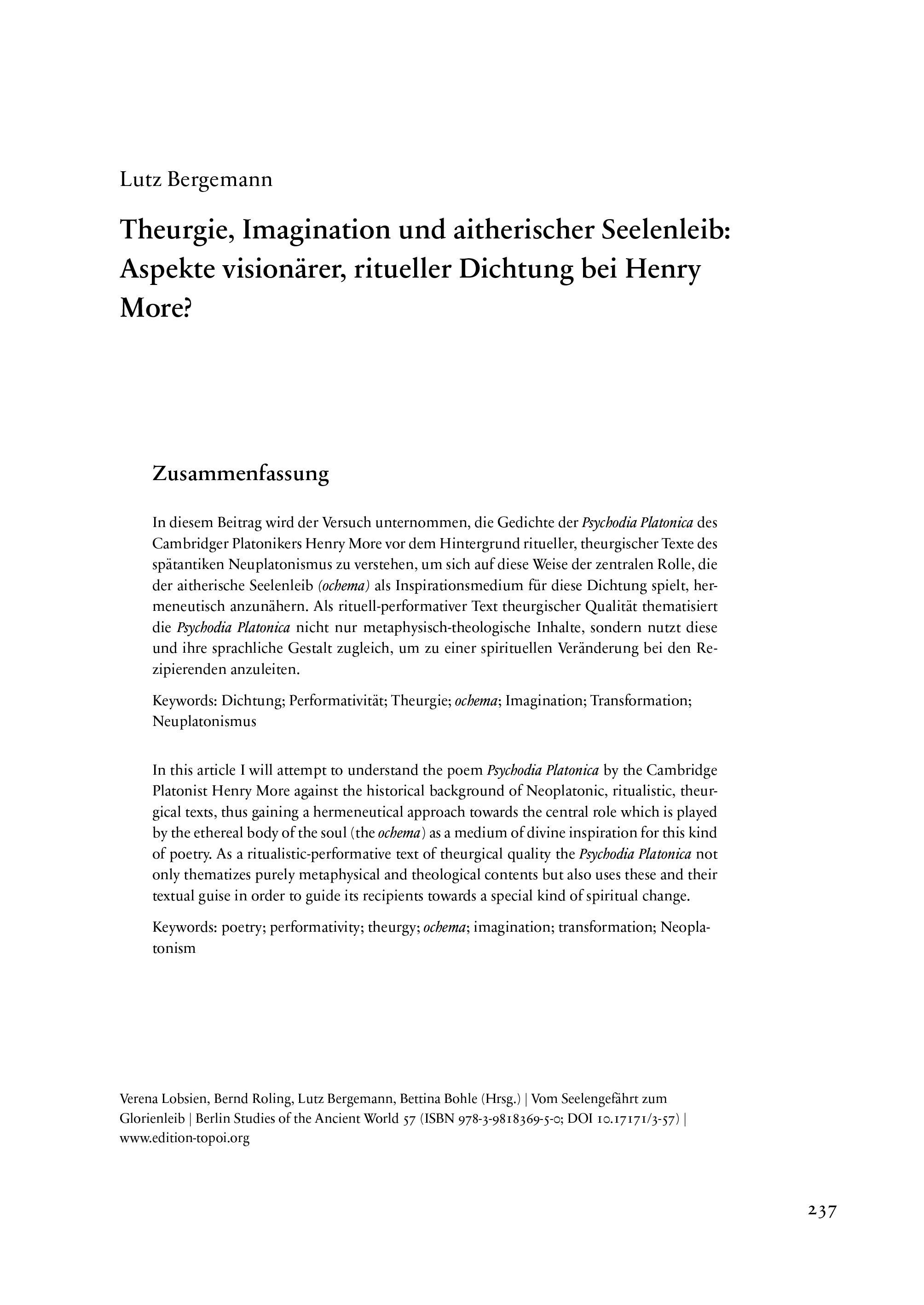Theurgie, Imagination und aitherischer Seelenleib: Aspekte visionärer, ritueller Dichtung bei Henry More?
In this article I will attempt to understand the poem Psychodia Platonica by the Cambridge Platonist Henry More against the historical background of Neoplatonic, ritualistic, theurgical texts, thus gaining a hermeneutical approach towards the central role which is played by the ethereal body of the soul (the ochema) as a medium of divine inspiration for this kind of poetry. As a ritualistic-performative text of the urgical quality the Psychodia Platonica not only thematizes purely metaphysical and theological contents but also uses these and their textual guise in order to guide its recipients towards a special kind of spiritual change.
In diesem Beitrag wird der Versuch unternommen, die Gedichte der Psychodia Platonica des Cambridger Platonikers Henry More vor dem Hintergrund ritueller, theurgischer Texte des spätantiken Neuplatonismus zu verstehen, um sich auf diese Weise der zentralen Rolle, die der aitherische Seelenleib (ochema) als Inspirationsmedium für diese Dichtung spielt, hermeneutisch anzunähern. Als rituell-performativer Text theurgischer Qualität thematisiert die Psychodia Platonica nicht nur metaphysisch-theologische Inhalte, sondern nutzt diese und ihre sprachliche Gestalt zugleich, um zu einer spirituellen Veränderung bei den Rezipierenden anzuleiten.

